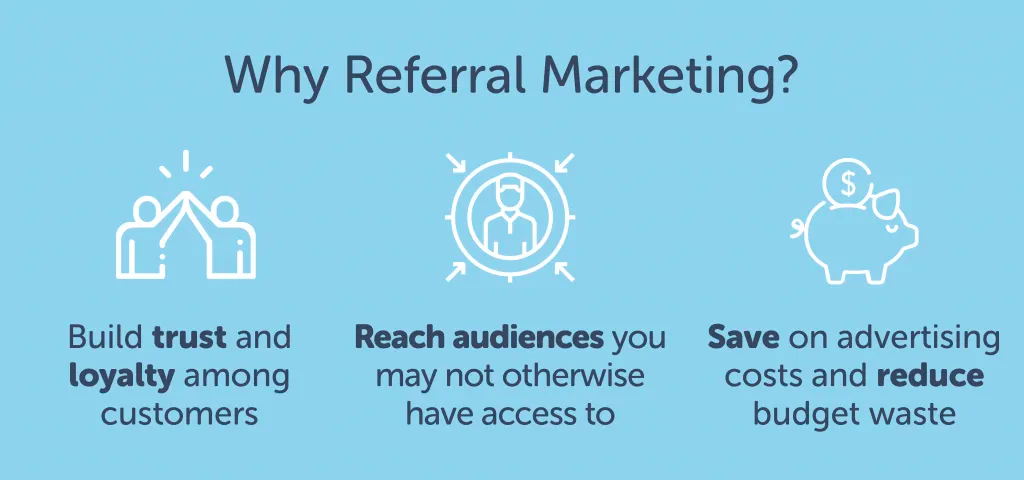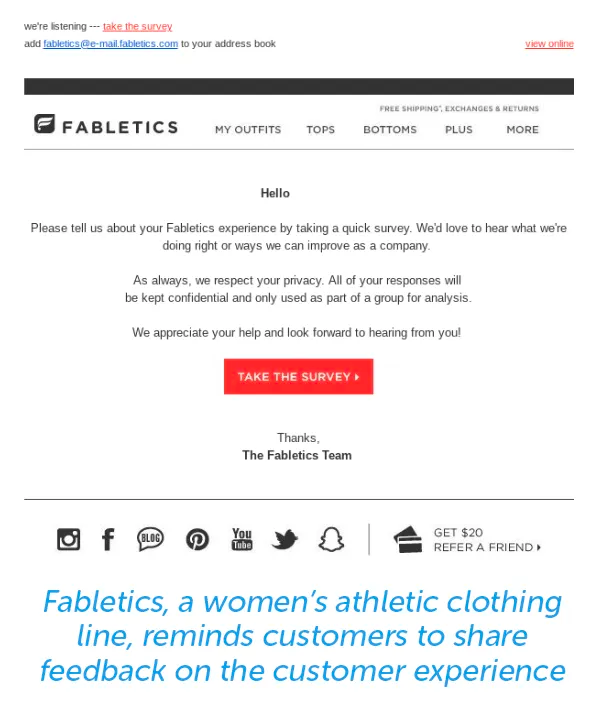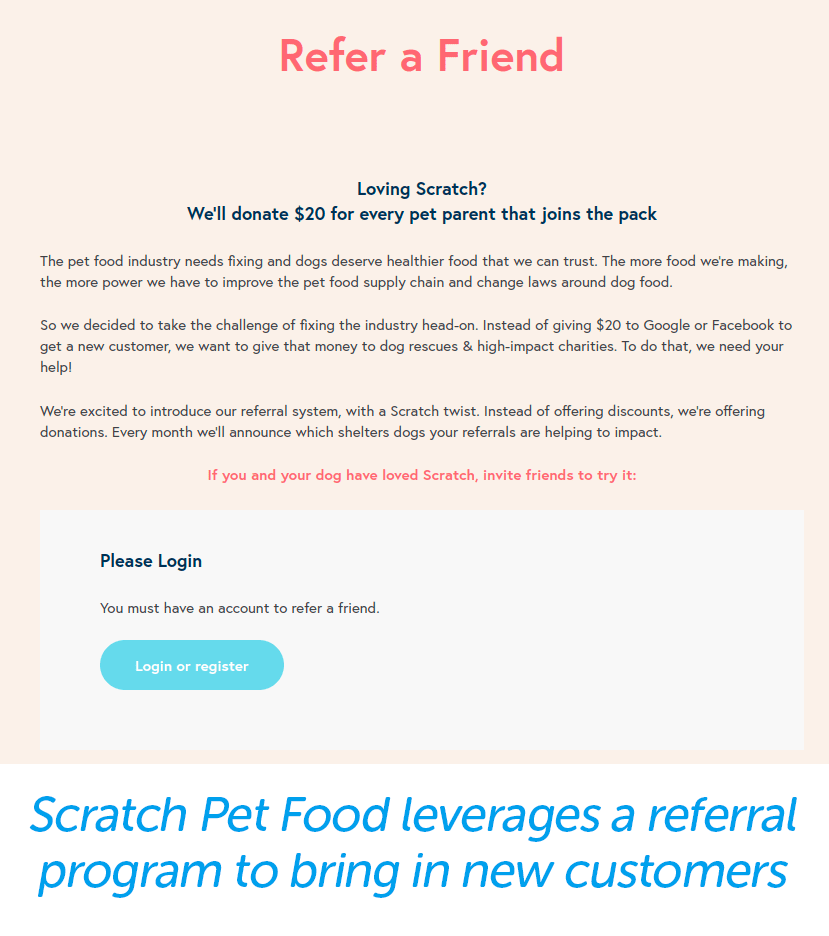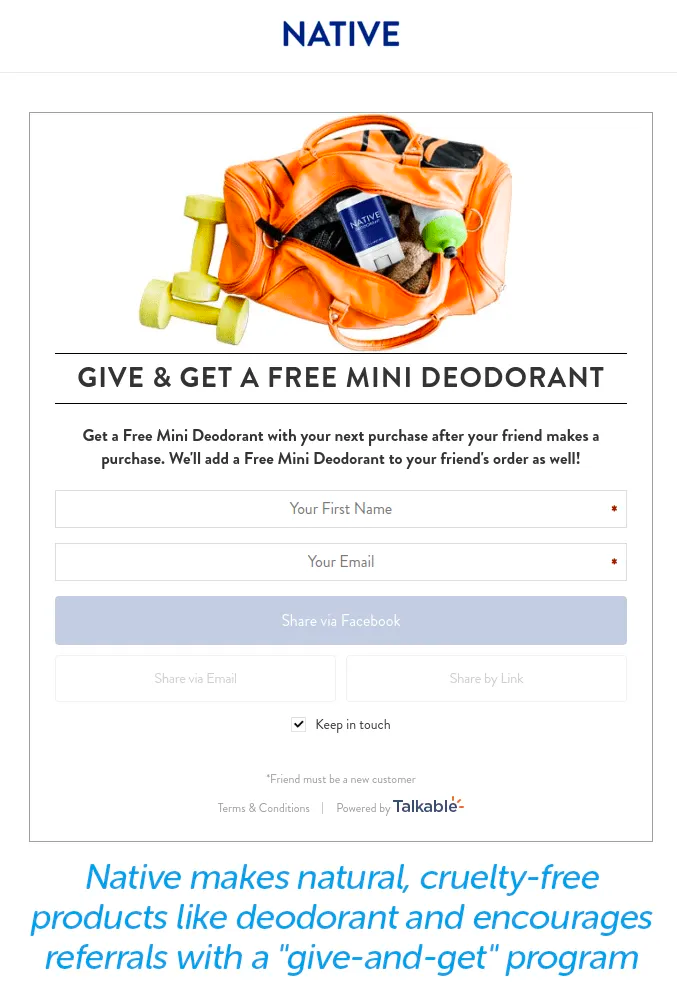People love to share their experiences, whether it’s posting on Instagram about how great the coffee is at the new place on the corner, or tweeting about the fantastic customer service at Wayfair. Today, this is known as referral marketing.

In the age of sharing everything and anything on social media, in blog posts, or over a drink, it’s crucial for brands to do everything they can to create positive customer experiences. The reason: If your customers had a memorable experience — good or bad — you can be sure they’re talking about it.
According to MarketingCharts, 93% of customers report they trust recommendations and reviews from family, colleagues, and friends regarding brands and services. This makes these types of reviews the highest-ranked source for trust and verifiability.
In short, people trust the opinions of products and services from the people they care about most.
Referral marketing is powerful for many reasons, but what sets it apart from other marketing strategies is that it can almost effortlessly lead to more customers and strengthen your existing customer base — that is, if you’ve provided an experience worth raving about.
So how can you use referral marketing to your advantage? We’re breaking down how you can create and implement a referral marketing strategy that converts.
What Is Referral Marketing?
Referral marketing happens all the time. How often do you find yourself asking friends and family for book or movie recommendations? Maybe you love to write reviews on Yelp or TripAdvisor after eating at a new restaurant or staying at a hotel.
Human beings are wired to share their experiences, whether it be with those they are close with or on a public platform. We do this instinctively — sometimes whether we realize it or not.
As a result, referral marketing can have a significant impact on your brand whether you are prepared or not. It gives you the power to:
- Build trust and loyalty among customers
- Reach audiences you may not otherwise have access to
- Save on advertising costs and reduce budget waste
In fact, customers who are referred by other customers have a 37% higher conversion rate and are four times more likely to refer additional customers to your product or service. What’s more: according to TrustPilot, 76% of consumers say they’re more likely to trust information shared by regular people over content shared by brands.
That’s quite the impact.
Because of this, it’s important to encourage customers who had a positive experience with your brand to share that experience with family, friends, and others who may be interested.
This sounds like a no-brainer, right? Here’s the catch: It doesn’t happen nearly as often as it should.
Getting customers to share their experiences — in a way that benefits your brand the most — is often the tricky part. They forget to share, even if they mean to sing your praises.
So how do you get your customers to share their experiences in a way that benefits your brand?
Let’s take a look at a few different ways you can leverage a referral marketing strategy that will help grow customer loyalty and increase your conversion rates.
Make Sharing Easy for Customers
A surefire way to encourage customers to share their positive experiences is to make it easy for them to do so. Whether you include a share button at the end of a feedback form or a CTA in an email sequence, make sharing or recommending as simple as possible.
Not only does this help ensure that customers follow through, but encouraging customers to share directly after an interaction means the experience is fresh in their minds, which can make for better reviews.
Some brands take brand loyalty to the next level and inspire customers to become advocates or join referral programs. These programs often include a reward component: The more referrals each advocate makes, the more they are rewarded.
Create the Best Customer Experience Possible
Give customers something to share about! To make referral marketing work for you, you must provide your customers with an outstanding experience — one that they will want to share.
However, mistakes happen, and every customer experience isn’t going to be perfect. If you make a mistake, own it and do what you can to fix it. After all, as we mentioned above, word-of-mouth sharing goes for both positive and negative experiences.
Build Sharing Into the Customer Experience
Don’t wait for your customers to share. The best way to encourage them to share is to ask them to do so. When a customer wraps up a course, makes a purchase, or reaches a milestone in their interaction with your brand, ask them to share their experience.
This is a scenario where automation works well. Emails triggered by a particular action not only help nudge customers to share their experiences but safeguard against forgetting to ask them.

This email from Fabletics was sent to a customer after they made a purchase. They’ve included social icons at the bottom of the email after the survey CTA as well as a “Get $20, Refer a Friend” CTA.
The refer-a-friend CTA directs customers to a landing page where they can find their unique referral URL, a pre-written email that can be sent to friends and family, and social media icons for easy sharing.
Keep a Pulse on Your Data
There are countless ways to slice and dice your data, but make sure you have a clear understanding of which networks are driving the most traffic and referrals.
Whether it’s taking a look at your Google Analytics referral network numbers or monitoring your KPIs through referral marketing software, make sure you have a grasp on the channels responsible for the most referrals. Knowing where your referrals are coming from will help you continue that growth.
Consider Creating a Referral Program
As we mentioned above, building an incentivized referral program that builds brand advocacy and loyalty is an excellent way to leverage word-of-mouth marketing. Referral programs can be as intricate as you want them to be, but keeping things simple for customers is probably the best route to take when getting started.
“We started our referral program in 2015, and it’s done wonders for our brand and sales figures,” says Alan LaFrance, Marketing Strategy Manager at Lawnstarter, an online lawn care booking platform. “It drives roughly 17% of our sales volume, and at a very low acquisition cost.”
Best Price Nutrition, an ecommerce site selling vitamins and supplements, recently launched a referral program. In six months, they’ve seen sales from referrals grow from $1,000 per month to $10,000 per month. “In the beginning, we did it manually, but as it grew it was taking up way too much time,” says Jeff Moriarty, Digital Marketing Manager. “My tip to other business owners is not to try to manage it on your own. You can purchase apps to help you manage, pay and signup referrals at a very reasonable price and it saves you tons of time, which you can focus on other areas of your business.”
A few notable referral marketing tools include ReferralCandy, LoyaltyLion, GrowSurf, and Extole.
Give customers their own referral link or code they can share with others to unlock rewards or points. Incentivized referral programs are optimal because you not only get the benefit of acquiring new customers, but you are also simultaneously encouraging existing customers to spend more money. Win-win.
Examples of Referral Marketing in Action
Next, let’s take a look at a few excellent examples of referral marketing at work.
Tiny Tags
Tiny Tags is a jewelry company that designs customized, high-quality pieces meant to celebrate motherhood.
Being part of the Tiny Tags brand ambassador program means access to insider discounts, the opportunity to receive pieces from every new collection released, and the chance to be featured on Tiny Tag’s social media accounts and email newsletters.

This program works for those who not only love the product but are likely to purchase the product again. Tiny Tags can foster a community of moms who align with their target audience, create an inventory of user-generated content, and continue to build a brand on the foundation of authenticity.
Scratch Pet Food
Similar to Tiny Tags, the referral marketing program at Scratch Pet Food speaks to a specific audience — in this case, animal lovers.
With Scratch Pet Food’s refer-a-friend program, they’ll donate $20 to dog rescues and high-impact charities for every new customer that joins their “pack.” Scratch Pet Food prides themselves on giving to important causes rather than using referral dollars for other business-centric means.

This unique approach to a referral marketing program speaks not only to pet lovers but to those who are motivated by feel-good causes. Customers know their dollars are going to a worthwhile cause rather than to a big corporation, which can be a powerful incentive.
Native Deodorant
Native Deodorant uses a popular, yet effective approach for their referral marketing program. Native will gift customers and their friends a free mini deodorant after both make a purchase.

This way, Native sparks a new round of customers and boosts sales among existing customers. To take things a step further, Native makes it easy for customers to share this deal on Facebook, via email, or with a unique link by embedding sharing tools right within the email.
Referral Marketing: Another Reason To Keep the Customer First
There’s no question about it — referral marketing can be one of the most impactful marketing tools you use to grow your customer base and advocacy. Your customers are going to have an opinion about their experience with your store, product, or service, so why not create the best experience possible?
Just remember: Referral marketing starts with a smart strategy. Create your plan and start measuring results to see what works best for your brand.
Take Your Customer Experience to the Next Level With Managed WooCommerce Hosting
Managed WooCommerce Hosting is built to reduce query loads by up to 95% which increases your store’s speed, meaning your customers will have a better store experience.
Managed WooCommerce Hosting comes standard with premium plugins, built-in cart abandonment technology, sales performance monitoring, and much more.
Check out our managed WooCommerce plans to get started today.

